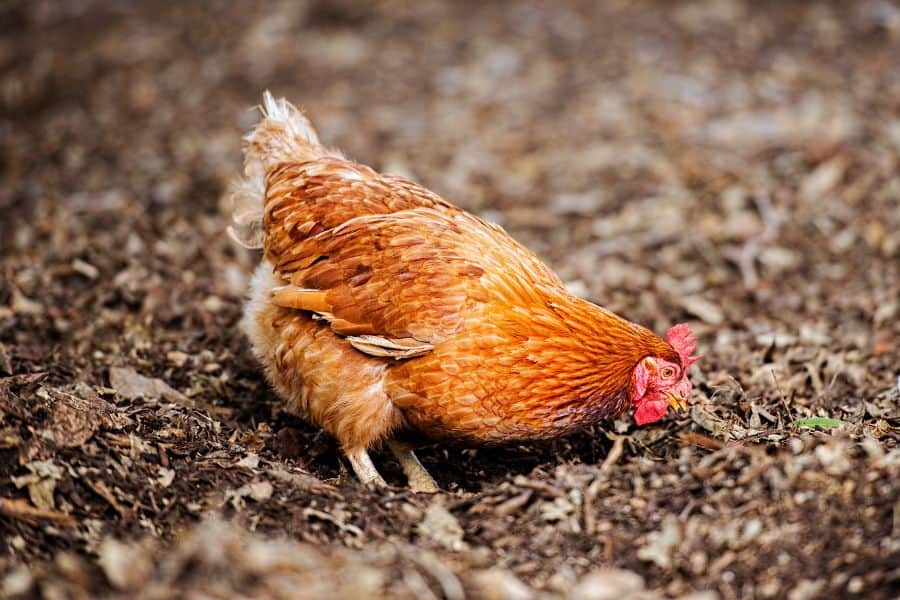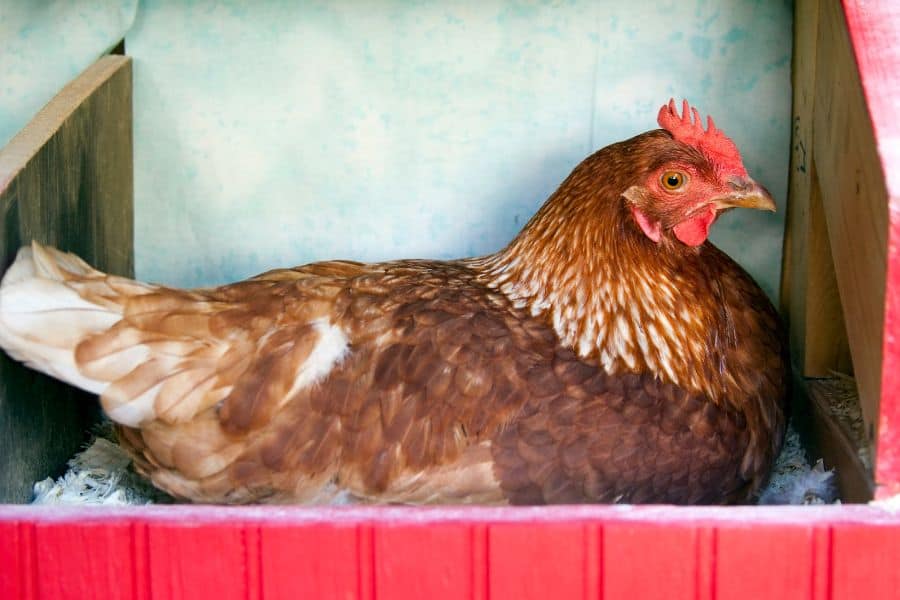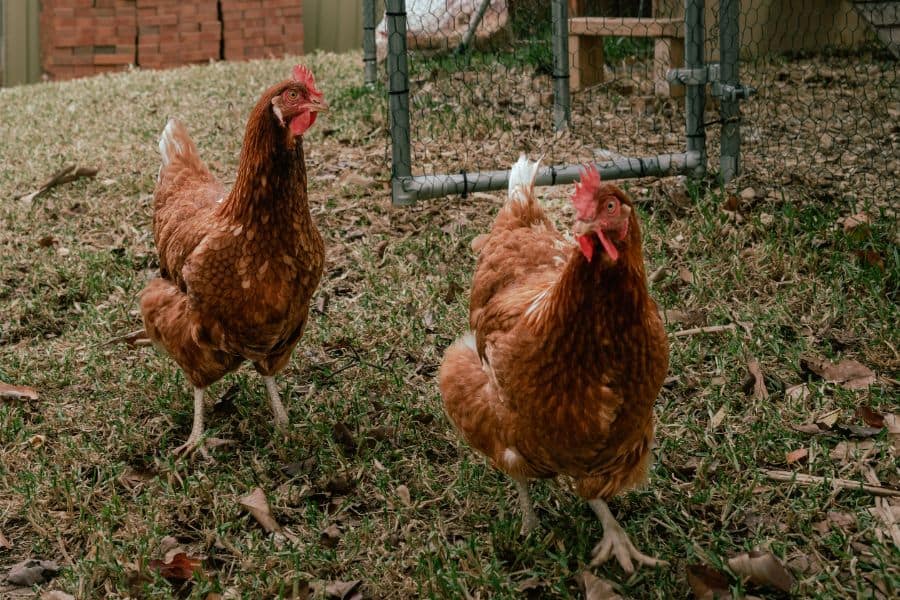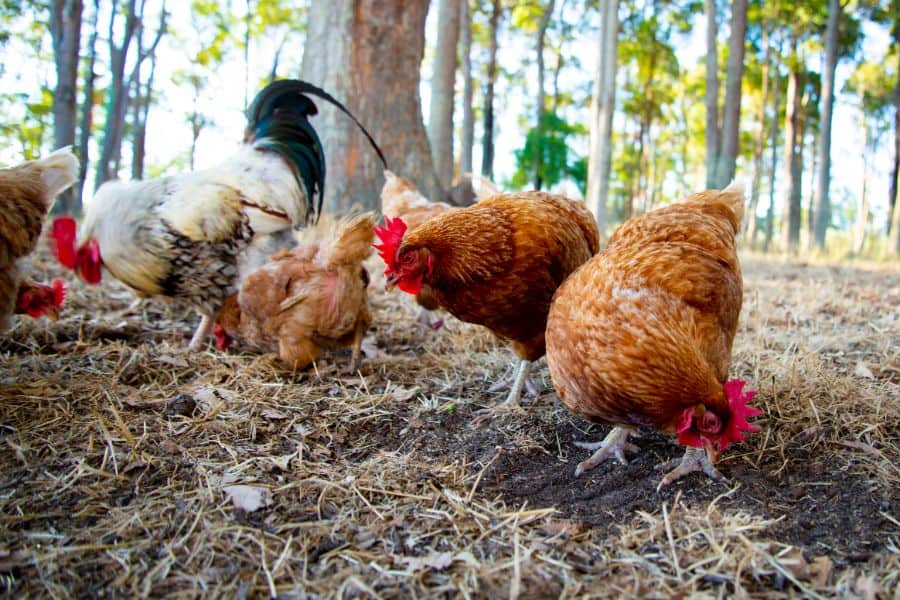The ISA Brown has been around for just over 40 years, a short period of time compared to other chicken breeds and even some hybrids. However, it has already established itself globally as one of the best layers available.
Unlike other chicken breeds you may have heard of, the development of the ISA Brown was more modernized and is an ongoing process. The result was a chicken that has proven to be exceptionally good at its purpose.
ISA Browns don’t have a unique appearance as they were not intended to be for exhibition. However, they have a personality that has endeared them to many farmers over the years.

Anyone looking to raise ISA Browns will have more than one approach they can try depending on available resources and other factors. The developers of these chickens promise an economic opportunity like no other; we explore how accurate these claims are.
ISA Brown Quick Facts:
| Names | ISA Brown, Hubbard ISA Browns |
| Origin | France |
| Purpose | Egg Production |
| Egg Production/Year | 300+ |
| Climate | Cold and Heat Hardy |
| Plumage Color | Chestnut with some white feathering (hens) |
| Weight (Hens) | 4.4 lbs. |
| Personality | Docile/Non-Aggressive |
| Unique Fact | Was developed for battery cages but adapts well to free-range systems. |
The Short History of the ISA Brown
Origins and Development
The story of the ISA Brown started in 1975. The French Ministry of Agriculture decided it was time the country had a poultry sector that rivaled those of other countries on the global stage.
Two organizations, Studler S.A. and I.N.R.A. Magneraud merged their stock of chicken to form the organization known as Institut de Sélection Animale or ISA. The ISA Brown would later take on the name of this organization.
The development of the champion layer progressed rapidly and involved Rhode Island Reds and Whites, among other breeds. In 1978, the ISA Brown was ready and by the 1980s, it was a global market leader in the production of brown eggs.
Current Ownership
The organization that launched the ISA Brown has undergone several changes over the years. The work that was started by the Institut de Sélection Animale continues today under Hendrix Genetics, a breeding company that is based in the Netherlands.
These chickens are occasionally called Hubbard ISA Browns, a reference to the company that was formed in a previous merger between the ISA Group and Merck & Co.
Appearance of ISA Brown Chickens
Size
ISA Browns were developed to be battery hens. The end result was a chicken that can be rated as small or medium-sized compared to heritage breed layers.
The hens of this hybrid typically weigh around 4.4 pounds at 80 weeks of age. The roosters, if allowed to mature, can weigh around 6.6 pounds.
Plumage
As the name suggests, ISA Brown chickens are brown in color. Specifically, the hens will be light brown and have some white bits when young, but the brown turns into more of a chestnut color as the bird matures and the white bits stand out more.
The roosters are said to have the reverse color scheme with white being the base color. However, because these birds are commercial hybrids that are prized as layers, there isn’t much information available on the roosters.
Additional Features
Other features of ISA Brown hens are red wattles and single combs. The eyes can be yellow to red in color and the combs are of the single variety.
Production Potential of ISA Brown Hens
How Long Before ISA Brown Chickens Start Laying?
ISA Browns are expected to start laying when they are 18 weeks old. The period before laying starts is crucial and the hens must be fed a suitable diet and kept as healthy as possible to ensure they are at their best when they start laying.
How Long is the ISA Brown’s Peak Production Period?
The peak production period for ISA Browns is between their 18th and 100th week which translates to 82 weeks or 18.5 months. This is why in commercial operations the layers are usually replaced after around 2 years.
How Many Eggs at Peak Production?
During the peak production period of ISA Browns, you can expect to get 470 eggs from each of your hens according to Hendrix Genetics.
What are the Characteristics of ISA Brown Eggs?
ISA Browns are known for producing large brown eggs with the average weight of the eggs being 63 grams.
The eggshell strength of ISA Browns is also quite good, limiting the possibility of breakage. These qualities are not incidental and are the result of the research and selective breeding effort.
What is their Feed Conversion Ratio?
The feed conversion ratio is an important metric for operations that are highly commercialized. It is a measure of the weight of feed intake versus the weight of the eggs produced.
ISA Browns are considered exceptionally efficient. Over their production life, their cumulative feed conversion ratio is expected to be in the range of 1 kg of eggs for every 2.15 kg of feed consumed.
The feed conversion ratio is important to know when the bulk of the food consumed by your chickens is bought. It can help you to price your eggs correctly and ensure you’re getting a good return on your investment.
Are ISA Browns Any Good for Meat?
At the end of the day, ISA Browns are chickens so you can always eat them if you had to. However, because they are bred to be mainly good at laying eggs, their qualities as table birds are neglected.
Its meat has been described as tough and not as tasty as that of a good meat chicken. There’s also the fact that they don’t have much meat on them.
They can certainly be used to make chicken soup, mincemeat, or some other dish where their shortcomings are likely to go unnoticed.
Farming Options for ISA Brown Chickens
ISA Browns were originally developed to be battery hens. This means that they were intended to be caged layers.
However, in the years since their development, other factors have come into play including animal welfare and the benefits of raising hens in less stressful environments.
Additionally, conventional battery cages have been banned in some places such as the European Union and they are being phased out in countries like Canada. Therefore, it has become necessary to find alternative ways of farming layers like the ISA Brown.
Alternatives or non-cage systems for raising ISA Browns that are recommended by the management guide from ISA are:
- Barn or deep litter system
- Aviary houses
- Free range
Barn/Deep Litter System
This is essentially a house that provides the chickens with a litter area that allows them to scratch, dust bathe, and engage in other conventional chicken activities. Water and feed are fed through a slatted area and the birds also have access to nest boxes.
Aviary House
An aviary house is similar to the barn system, but it has a multitier system that encourages the chickens to move about.
The food comes in at different levels and water is usually put in front of the nest boxes. This means that to eat, lay eggs, drink, or rest, the chickens must move from one tier to another.
Free Range
This is usually considered the most humane system for raising layers like the ISA Brown. The chickens can be housed in a barn or aviary, but they are also allowed to roam outdoors.
Best Housing Option for ISA Browns
The issue of how to best raise layers has been controversial in recent years. Many people believe that the cage system is the most efficient and cost-effective way of meeting the demand for eggs in the world.
On the other hand, many others believe the welfare of layers should not be sacrificed. Therefore, when you get your ISA Browns, you may think that you have to choose between profits and the welfare of your birds.
As it turns out, this is not necessarily the case. In one study, it was pointed out that the cost of setting up battery cages for ISA Brown chickens resulted in a higher production cost compared to deep litter and free-range systems.
Additionally, although eggs produced in the deep litter system brought in more revenue, it was the ISA Browns raised in a free-range system that recorded the highest net returns. The lowest net benefit was from ISA browns raised in battery cages.
Battery cages may make sense for larger commercial operations. However, as a backyard farmer, the lower cost of raising your ISA Browns in a free-range system isn’t just better for their welfare but may be more financially sound if you already have the space.
Maximizing Production from ISA Brown Hens
Looking at the numbers from the ISA Brown makes it seem like a no-brainer. A layer this productive seems like a guarantee of profits.
However, any experienced farmer will tell you that your mileage will vary. There are certain factors you must handle correctly to get the best out of your ISA Brown hens including but not limited to:
- Food and water
- Heating
- Ventilation
- Lighting
- Hygiene
- Adequate housing, etc.
Many farmers, especially first-time farmers, struggle with the management of their flocks. This can result in issues such as high mortality, lower productivity, and poor bird welfare.
ISA provides a management guide that you can follow when setting up an alternative production system, i.e., cage-free, to get the best results from your flock.
Housing Recommendations
Housing-related recommendations from the management guide include:
- The same type of housing should be used during the rearing and production phases to make the transition easier for the hens. A stressful transition is bad for productivity.
- Partitions should be provided to prevent competition. This helps to prevent problem behaviors such as cannibalism and feather pecking and can also lower mortality rates.
- Lightweight materials should be used in construction to make them easier to move when cleaning and disinfecting the housing.
- For better airflow, wire mesh, and similar solutions should be used instead of solid walls.
- Adequate heating systems for chicks must be provided but they should not have burners since these will require additional ventilation.
- Perches should be provided to encourage natural bird behavior.
- The nests should be the most attractive and comfortable parts of your ISA Browns’ house to keep them from laying eggs on the floor or other parts of the house.
Feeding Recommendations
Some of the feeding recommendations include:
- Use a type of feed that is compatible with the growth stage of your ISA Brown chickens.
- Insoluble grit must be availed to both pullets and laying hens, but these should be small enough to be swallowed easily by the birds.
- Measure the intake of water and feed every day as deviations can be signs of a disease.
What is the Life Expectancy of ISA Brown Chickens?
ISA Brown chickens have a shorter life expectancy compared to other chickens. These hybrids were developed to lay as many eggs as possible in a short period of time.
These demands on their reproductive systems result in their life expectancy being between 3 and 4 years. You may find some ISA Browns that live for up to 8 years but that is not the norm.
What is a Hybrid Sex Link?
This is a term used to describe hybrids where male and female chicks have different colors. This makes it easy to separate the two sexes soon after hatching and this is the case with ISA Brown chickens.
Also Read:
Final Words
For some farmers, farming is primarily about their bottom line. Heritage breeds and even certain hybrids are unlikely to meet the demands of such farmers.
If this is the type of operation you’d like to run, the ISA Brown is the kind of hen you should be looking into. These chickens take egg-laying to a new level, and it is unlikely that heritage breeds can keep up with their laying ability and feed conversion efficiency.
With ISA Browns today, you’re not limited to raising them in cages and you may even get better results by trying out a free-range system. However, managing a large flock of ISA browns to maximize production is no small feat.
These sex-linked hybrids don’t usually live long but they produce a phenomenal number of eggs in their short lives.



